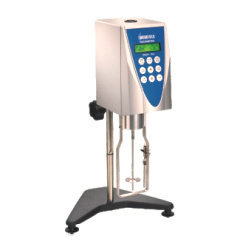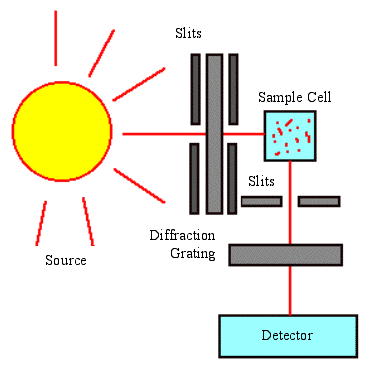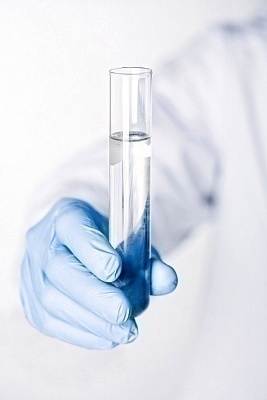The Brookfield Viscometer makes it possible to measure viscosity by employing techniques in viscometry. Viscometers (which can also be called viscosimeters) can measure viscosity through the varying flow conditions of the sample material being tested. They employ a spindle on a shaft that is designed to be dipped or immersed into a liquid that is then rotated. The rotation causes the fluid to produce a drag, which is then measured with the applied torque on the liquid’s viscosity. They are not designed to measure multiple flow conditions, but are possible with the use of a rheometer instead.
To be able to measure the sample’s viscosity in the Brookfield viscometer, the material needs to be stationary inside a container while the spindle moves while immersed in the fluid. Another possible option is to move the container with a stationary spindle. Whatever option is being used, the material must be able to produce a laminar flow over the spindle while moving. This is only possible with a low Reynolds Number.
The Reynolds number is a measure that counts the ratio of inertial forces to viscous forces, which quantifies them under given flow conditions. Inertial forces are measured as pV2/L, while viscous force is μV/L2. When the number is smaller, it allows the laminar flow to occur over the spindle on the Brookfield viscometer.
Calibration of a Viscometer
The process of calibrating a viscometer is fairly simple and a standardized fluid at a certain temperature is used. The Brookfield viscometer is then used to measure the fluid and any adjustments that are necessary to get the known value for the standard when the device performs the test.
One of the most common calibration standard fluids is water. Using distilled water is recommended because it lacks any additional electrons and is generally uniform each time it is measured out to exact measurements.
Water at 20 degrees Celsius (68 degrees Fahrenheit) has 1.002 milliPascals units of viscosity. It also has a kinematic viscosity of 1.0038 millimeters squared per second. When the water is measured through a viscometer, these are the values that should be achieved through running the standardized testing for calibration. Every viscometer is capable of calibration. Calibration can also be done mathematically when necessary.
Standard Viscometer Types
Inline – Inline Brookfield viscometers are designed to be installed into a closed system that requires the ability to monitor viscosity frequently. They are often high precision and are used within systems that remain closed or have changes made to the fluids.
Cup and Bob – The cup and bob viscometers used a “cup” filled with a certain amount of material necessary for the testing. The bob shaft was basically a rotational device that was inserted into the material and was brought up to a certain speed. What these viscometers measured was the amount of torque that was needed to get the bob to rotate at a certain speed depending on the material that was held in the cup “cell,” thus providing data that could be quantified. In some models, the cup rotates instead of the bob, which provides alternate forms of data that could differ in terms of accuracy.
Cone and Plate – The cone and plate viscometers make it possible to get shear rate data as well as the viscosity of a material being tested. The system requires the use of a cone shaped bob that is placed near the plate at a shallow angle with bare contact.
The Stabinger Viscometer
Named after inventor, Dr. Hans Stabinger, Anton Paar GmbH first presented this measuring principle, which is used to determine these parameters in the year 2000. It uses a modified Couette rotational viscometer to get these values.
The following equation is used in determining these values:
ν = η / ρ
The Couette rotational viscometer can be modified to provide a reading similar to the kinematic viscosity value. The cylinder used in a Stabinger viscometer is designed to be hollow and lighter than the sample weight. This combination allows the cylinder to float within the sample during the rotation and centrifugal force sends it to the center. This provides the Stabinger viscometer variety with a way around bearing friction, which provides an accurate reading. To measure torque speed, a resolution of 50pNm with a measuring range between 0.2 to 20,000 mPa is used. Density measurements are possible for the dynamic viscosity, which in turn can lead to the kinematic viscosity when using the oscillating U-tubes in the system.
The Stormer Viscometer
The Stormer viscometer is a specialized viscometer type that is designed to test the viscosity of paints and can be used in other applications as well. It is widely used in the paint industries to test paint quality based on its viscosity.
The viscometer works by using a specialized paddle shaped rotor that is spun with an internal motor. The paddle should be submerged in the cylinder of liquid to be tested then spun. The speed is adjusted to get the correct amount of load for the rotor. When the speed decreases, so does the load on the fluid and when the speed increases, the load increases. This simple variation makes it possible to get a wide range of data for viscosity on the same fluid as well as the optimum readings for each fluid.
Once the load is adjusted to the rotational velocity of 200 rotations per minute, the viscosity can be determined. Several published tables are available such as the one found on the ASTM D 562. The viscosity value is provided in Krebs units, which can only be found with the Stormer variety of viscometers. Paints that are not designed to be spread with a paintbrush or paint roller will not provide sufficient data with this type of viscometer.
The Bubble Viscometer
To find a liquid’s viscosity with a bubble viscometer, a known liquid must be used such as a resin or varnish. The viscometer measures the value with an inversely proportional measurement of the time it takes for a bubble to rise in the liquid. A bubble rising quickly within a liquid is characteristic of a lower viscosity. The same is true for the opposite extreme. That is to say, if the bubble rises slowly, then the fluid’s viscosity is much higher. The viscosity range that can be determined with the bubble viscometer is within the 0.005 and 1,000 stokes range. The value can also be taken from data by observing 3 different time value lines taken from different bubbles then gets the bubble second readings, which can then be converted into stokes.




Follow Us!